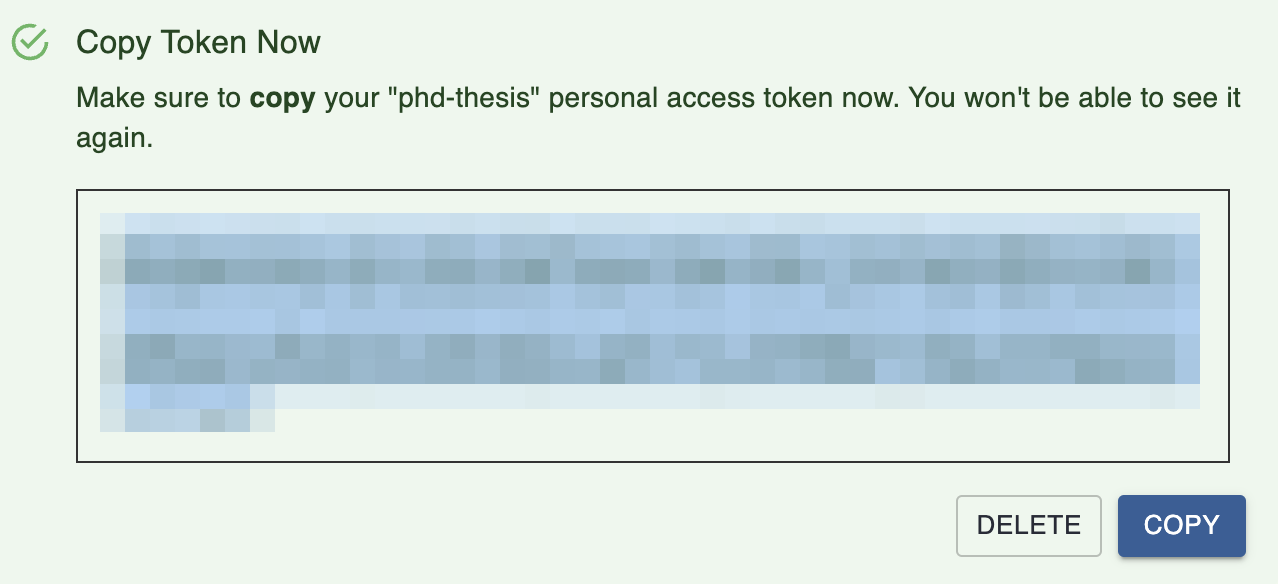Most translation and export functionality is local and does not require you to be logged into Curvenote. Additionally, the API for any public content on Curvenote does not require you to be authenticated. However, if you want to sync content from your private Curvenote projects to a local folder, modify any online projects, or deploy a website you will need to be authenticated.
The Curvenote CLI works on an API token that can be generated from your personal settings on curvenote.com.
Creating an API Token¶
API Tokens allow you to access your Curvenote content programmatically.
🛠️ You can create an API token by clicking here if you are signed in or navigating to your Personal Settings, which are available under your avatar in the top right.

Figure 1:Access the API Token by navigating to your Personal Settings by clicking on your avatar in the top right.
🛠️ Click on the Generate New Token, and give you token a description that you can recognize lated if you need to revoke it. You will be shown a screen that allows you to copy the API token for the next step.

Figure 2:Ensure that you copy your token for the next step. You will not be able to access this token again.
🛠️ Copy the API Token. You will not be able to see this token again, so be sure to copy it!
Sign In to Curvenote using the CLI¶
🛠️ Sign into the Curvenote CLI using the command:
curvenote token setYou will be asked for an API Token which you copied from your API Access settings in Curvenote (see above). The command will store a local config file that has your API token to be used for future calls to the library.
Validate you are signed in¶
🛠️ You can validate that you are signed in using the command:
curvenote auth listThis will print your username and email or tell you that you are not authenticated. This command will also list any other accounts that you can login as.
Changing Profiles¶
If you have multiple Curvenote accounts, for example, as a bot for a submission system, you can switch profiles using:
curvenote token selectThis will bring up a prompt to select which account you should use for the Curvenote API.
Authenticating on a Server¶
You can also override the config path by having a CURVENOTE_TOKEN in your environment, this is helpful when using the Curvenote CLI from a continuous integration system or on a server, for example, when deploying from a GitHub Action.
export CURVENOTE_TOKEN="API_TOKEN"Alternatively, you can use the curvenote token set $ENV_VAR to set the token programmatically; we recommend not to paste your token into the command line directly as that will create an entry in your terminal history.
Sign Out of Curvenote¶
To sign out of the Curvenote CLI, you can call:
curvenote token deleteThis will remove the local config file with the API token in it. Note, if you have signed into the CLI using the environment variable, you can unset that using unset CURVENOTE_TOKEN. To confirm that you are logged out you can run the command curvenote auth list as before, and it should inform you that you are not authenticated.